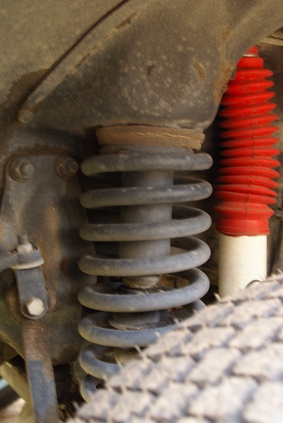
If your car feels like it isn't handling as well as it once did, you could have components in your vehicle's steering system that are wearing out. Some obvious signs of a problem are the vehicle pulling to one side during braking, the steering wheel pulling to one side, or difficulty maintaining control over uneven road surfaces. These symptoms can signal potentially serious problems that should be addressed immediately. A common cause of these issues is worn tie-rod ends. Tie-rod ends are part of the link between your steering system and your front wheels. Because they affect your ability to control your vehicle, you should assess their condition.
Place the vehicle in park, engage the parking brake, and lock the steering wheel with the front wheels in the straight ahead position by locking the ignition and removing the key.
Raise the vehicle on one side with the floor jack so the front wheel is approximately 6 inches off of the ground.
Place a jack stand under the vehicle making sure to position it under a solid contact point such as the frame rail, and slowly lower the vehicle onto it letting the full weight of the vehicle rest on the stand.
Repeat for the other side of the vehicle.
Locate the tie-rods, which will be visible as a small assembly with a rounded ball joint on each end and attached next to the inside of the front wheels. Firmly grasp the tie-rod in the center, and attempt to move it back and forth, and up and down. If any movement is detected, the joints are worn and need to be replaced.
If your vehicle has tie-rods that are encased in a hard rubber boot, push the front wheel inward and outward, watching for movement of the tie-rod. If it moves in and out when pushing on the wheel, it is worn and needs to be replaced.